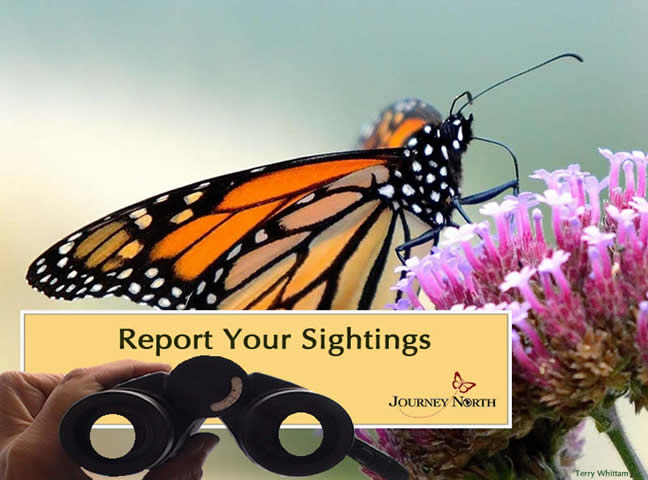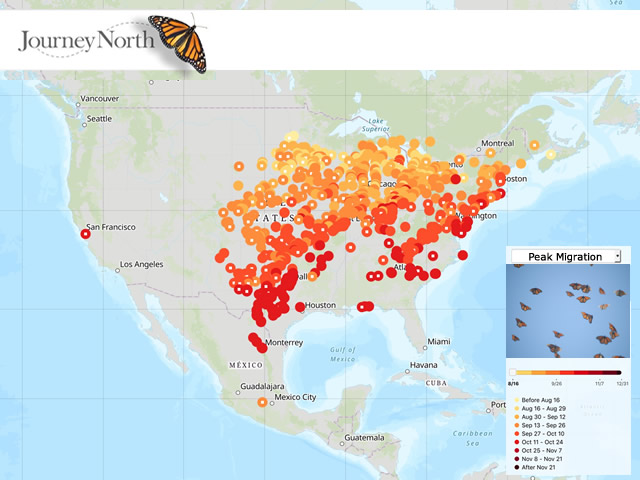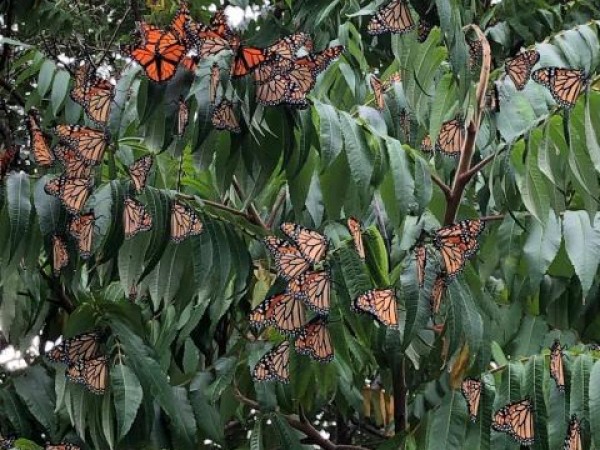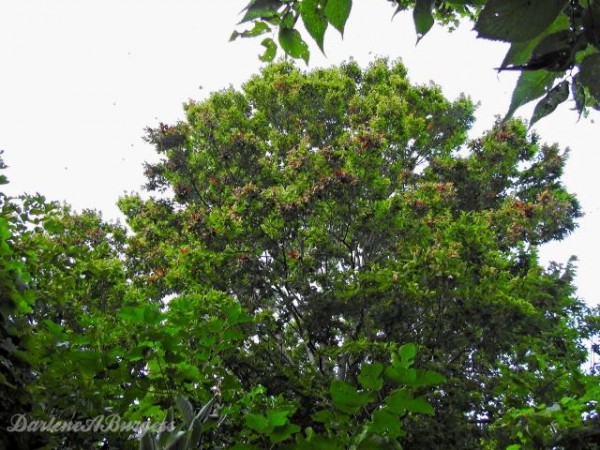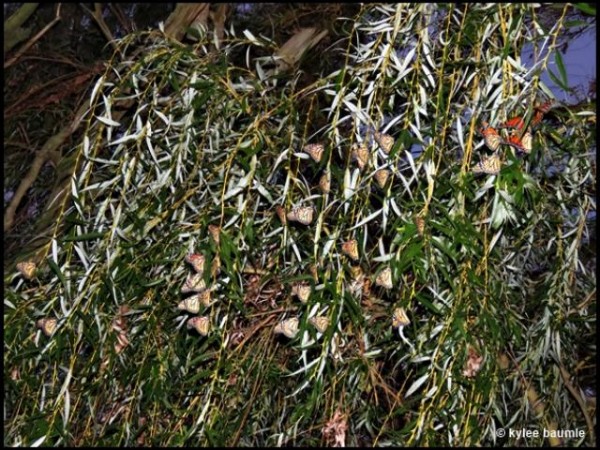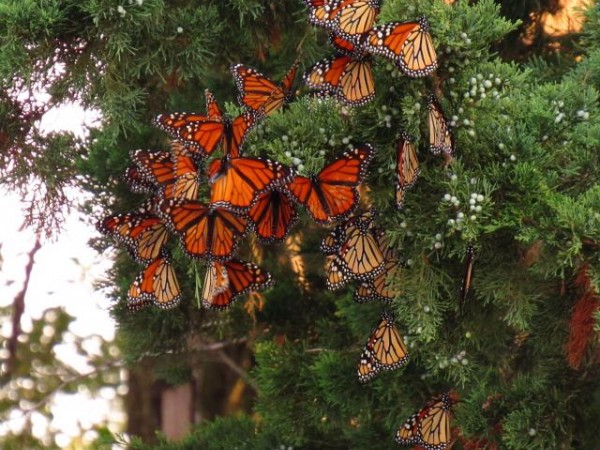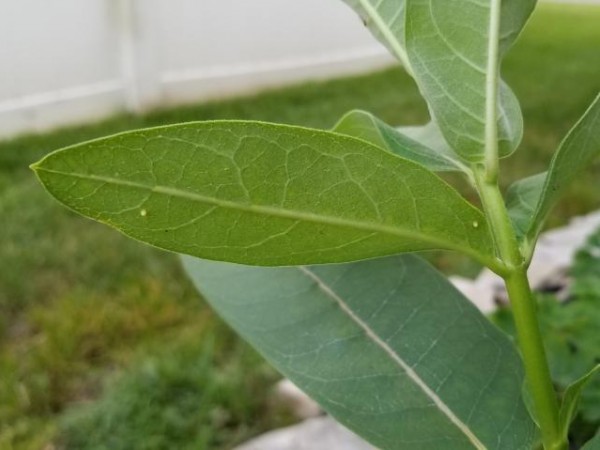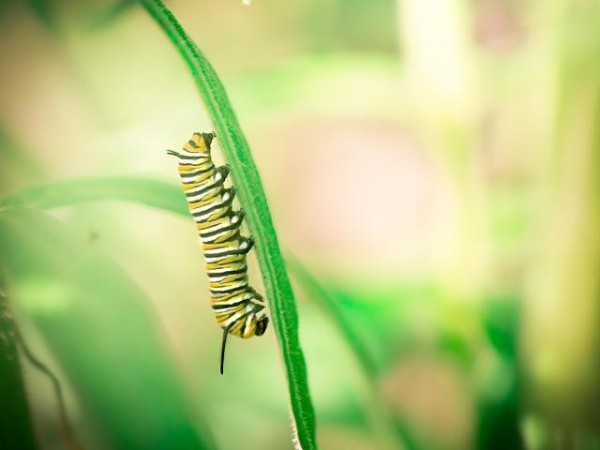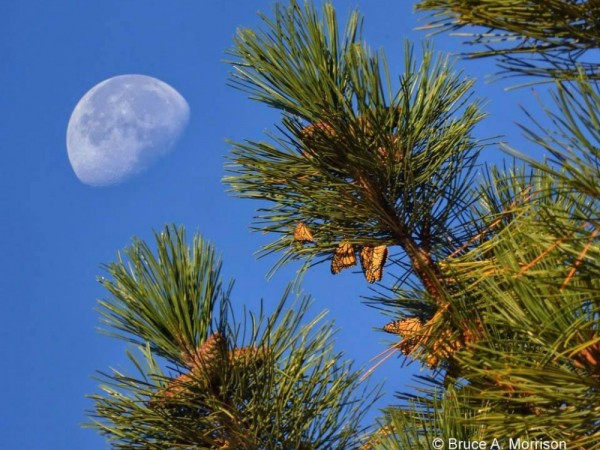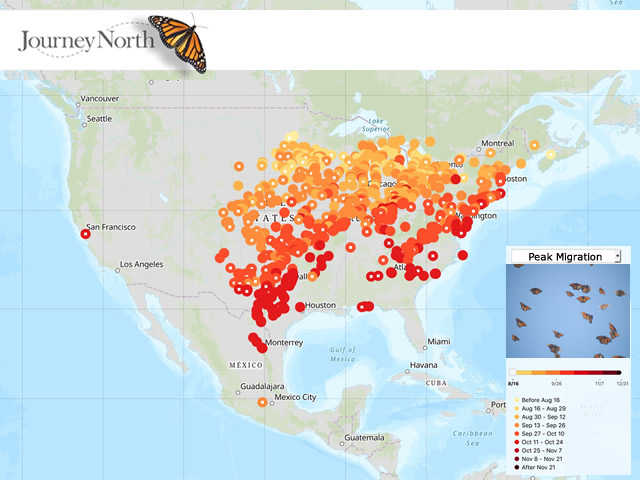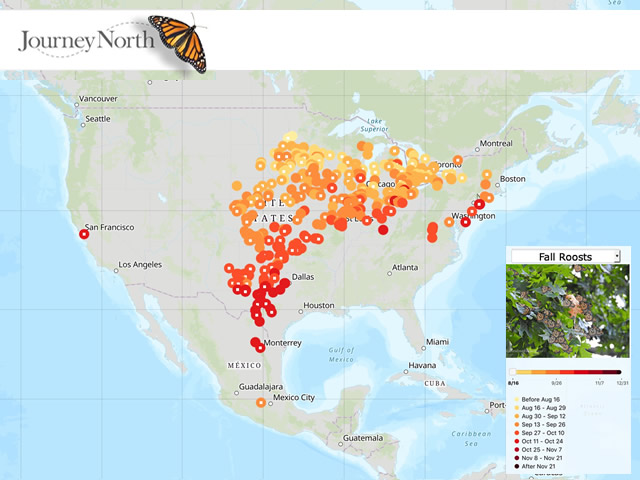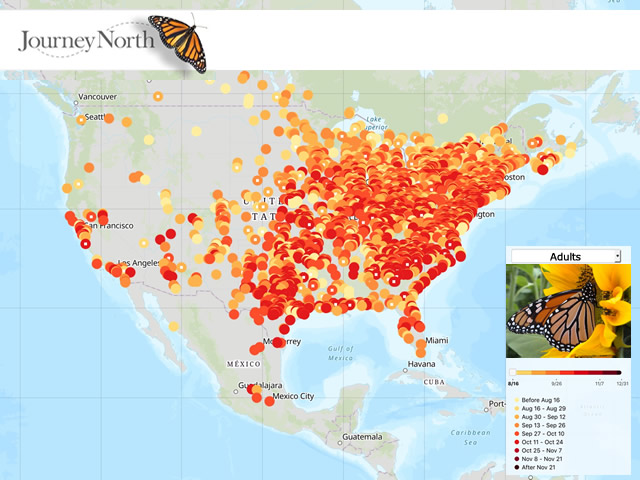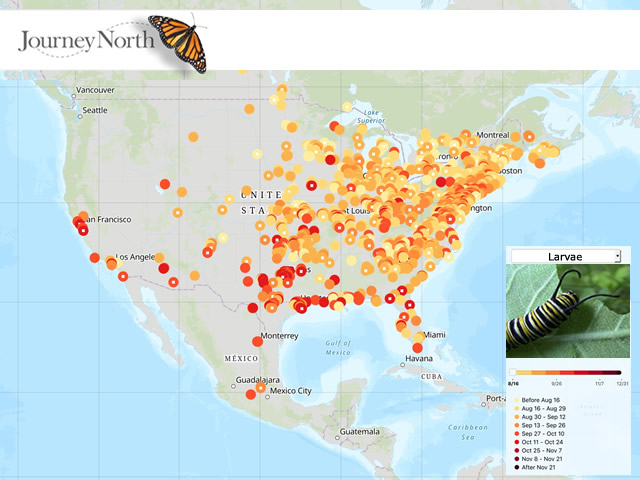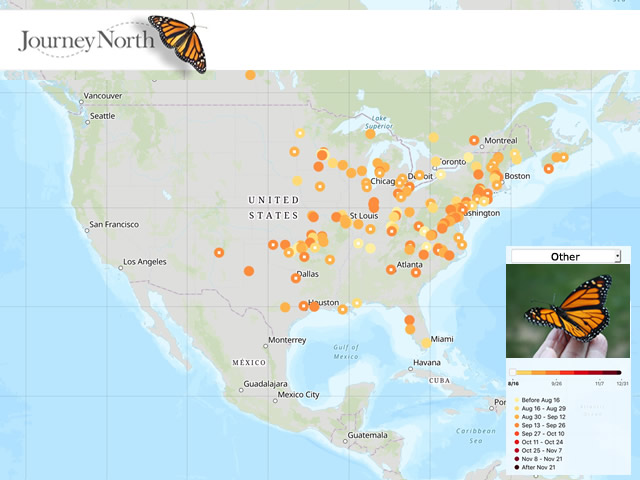Impressive Numbers of Monarchs Witnessed
Impressive Migration
From the Great Lakes region to South Dakota, Nebraska, Idaho and even Colorado, Journey North citizen scientists are witnessing impressive monarch roosts. Journey North observers are also reporting large numbers of migrating monarchs. A large exodus of monarchs is happening right now as monarchs roost along shorelines and traverse the skies on their way to Mexico. Take a moment to view the many wonderful photographs and videos posted to the Journey North monarch migration maps.
From Kent Park, IA: Alice exclaimed “There were at least hundreds...quite a thrill to see.” (09/08/2019)
From Toronto, ON: Ti exclaimed, “Its amazing to see…near my home at Parklawn and Lakeshore...and in the Georgian Bay (Balm Beach) area…It's been a very very good year for them in Ontario, because we had great rainfall, and this brings tons of wild flowers everywhere.” (09/03/2019)
From Clearville Park, ON: Steve estimated, “15,000 butterflies per hour flying at various altitudes above the bluffs on Lake Erie's north shore...all flying in the same direction – southwest towards Pt Pelee...For two, 10-minute periods, I count as many as I can see...compare the totals for each period and continue observing throughout the hour to see if the rate changes. I then used this information to estimate hourly totals.” (09/08/2019) Read the full report
From Paulding, OH: Kylee “estimated 1000 or more monarchs roosting...in trees [weeping willow, apple, pear, buckeye, peach, pine] that are on the south, west and north of a farm pond behind a house. There's a large clover field to the south and another to the north...” (09/11/2019)
From Point Pelee National Park, ON: Darlene continues her reports from Pelee Point, “Clusters grew to about 3500 monarchs. Further south there were 3 separate areas of clusters totalling about 1700 monarchs.” (09/08/2019)
From Britton, SD: Sandy found a “small roost [of an estimated 200 monarchs] with lots of wild flowers in the pasture to feed on.” (09/08/2019)
From Benedict, NE: Judy found a roost “on the north side of a shelter belt along a road.” (09/09/2019)
Western Reports
Also reporters from California and Nevada are remarking about how late monarchs are laying eggs this year. Learn more by reading Gail Morris’ Western Monarchs 2019 Fall Report #2.
Eggs Observations More Numerous in Southern Regions of U.S.
From Texas, Georgia and Missouri to New Jersey, Virginia and the Carolinas, Journey North observers are finding eggs.
From Washington Twp, NJ: Bridget commented: “I'm amazed at the female's ability to find the few viable milkweed leaves on which she places her eggs.” (09/10/2019)
From Farmersville, TX: Angie found “at least 10 eggs…within a 10 acre section after 15 minutes of looking…There are more out there! (09/05/2019)
From Nova Scotia to Central Mexico
A Journey North citizen scientist from Mexico reported a monarch larvae found on Mexican milkweed. The northern most caterpillar sighted was found in Nova Scotia.
From San Miguel de Allende, Guanajuato, Mexico: Rhea reported “3 large larvae in our garden. 2 feeding on Mexican milkweed on the first level, one on the milkweed on the terrace.” (09/05/2019) Read the full report
From Kings, NS: Rachel is “Hoping [the monarch caterpillars] make it to adulthood in time! (09/06/2019)
Your Valuable Observations
Journey North citizen scientists continue to contribute invaluable observations. Each report is a jewel of information, especially when observers take the time to include extra weather data.
Thank you for all that you are doing on behalf of monarch migration tracking!
What to Report
For PEAK migration observations, if possible, please indicate:
- Estimation method (How did you estimate the number of adults in flight?)
- Length of observation period
- Monarch activity observed (Were the monarchs in directional flight? Nectaring?)
For ROOST observations, please continue to include:
- Time of day you first saw the roost
- Date the roost first formed
- Nectar sources nearby like clover, alfalfa fields or wildflowers
- Overnight temperatures
- Wind direction
- Estimation method (How did you estimate the number of adults roosting?)
Photos are always welcome.
Fall Monarch Migration 2019
Please report all monarchs you see: Adults, Eggs & Larvae, Overnight Roosts, Peak Migration Events

